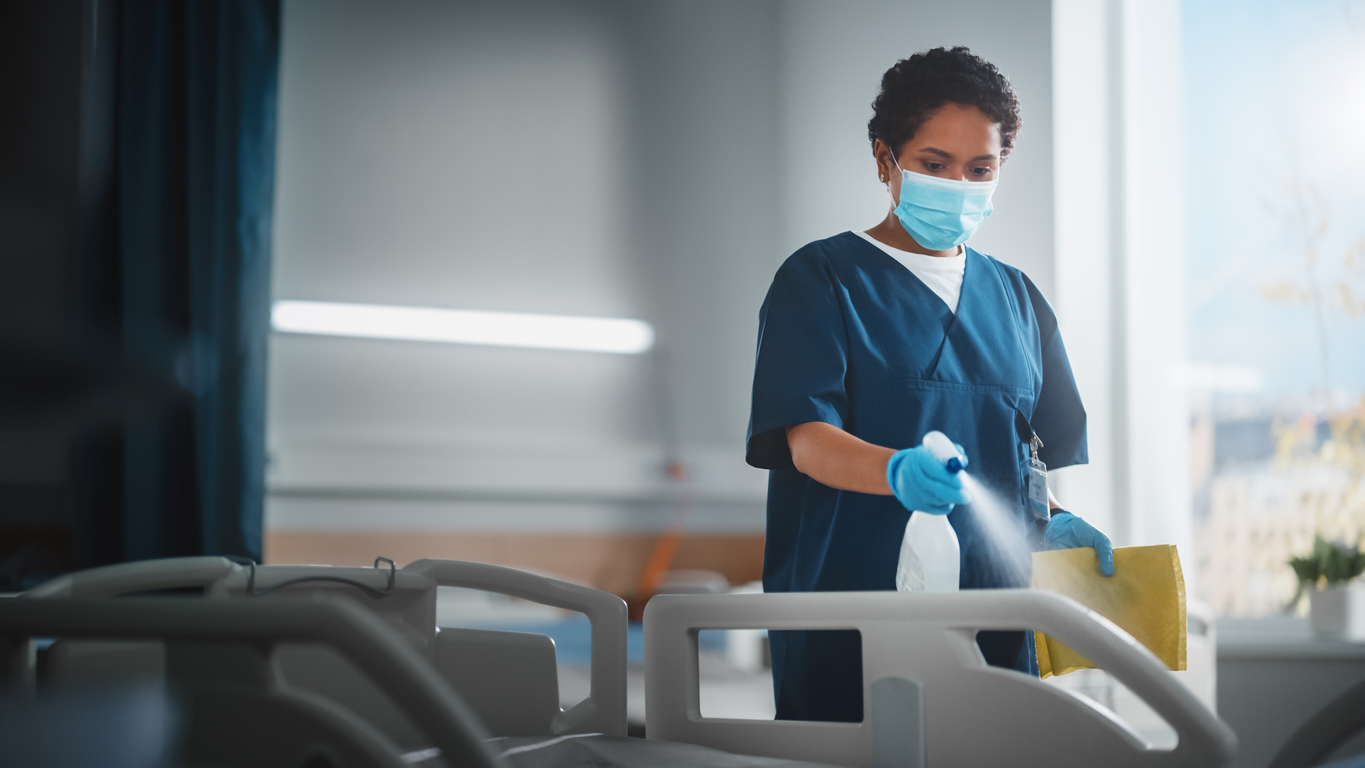
Maintaining hygiene has become a top priority in modern life, and disinfection plays a crucial role in preventing the spread of harmful microorganisms. From households and workplaces to hospitals and public areas, effective disinfection reduces the risk of infections and promotes a safer environment. Understanding the methods, importance, and best practices of disinfection is key to maintaining health and safety.
What is Disinfection?
Disinfection is the process of eliminating or reducing harmful microorganisms, including bacteria, viruses, and fungi, to safe levels on surfaces, objects, and environments. Unlike sterilization, which completely removes all microbial life, disinfection targets pathogens that pose a health risk. Proper disinfection prevents the spread of diseases and supports overall hygiene in homes, workplaces, and public spaces.
Why Disinfection is Important
Disinfection is critical in many areas of daily life. Here’s why it matters:
1. Preventing the Spread of Infectious Diseases
Pathogens can survive on surfaces for hours or even days. High-touch areas such as doorknobs, light switches, handrails, and keyboards often harbor harmful microbes. Regular disinfection of these surfaces prevents the transmission of illnesses such as influenza, COVID-19, hepatitis, and foodborne infections.
2. Maintaining Safety in Healthcare Settings
Hospitals, clinics, and laboratories are high-risk areas for infection. Disinfection of patient rooms, surgical instruments, medical equipment, and shared spaces prevents hospital-acquired infections (HAIs) and ensures the safety of patients, healthcare staff, and visitors 學校消毒.
3. Ensuring Food Safety
Foodborne illnesses can spread rapidly if food preparation areas are contaminated. Disinfecting kitchen surfaces, utensils, cutting boards, and appliances prevents bacteria like Salmonella, E. coli, and Listeria from contaminating food, ensuring public health safety.
4. Promoting Hygiene in Workplaces and Public Spaces
Schools, offices, gyms, public transportation, and communal areas are frequented by many people every day. Routine disinfection reduces the risk of contagious diseases, creating a safer and healthier environment for employees, students, and the general public.
Methods of Disinfection
Disinfection methods can be divided into chemical and physical approaches. Each has its applications, advantages, and limitations.
Chemical Disinfection
Chemical disinfectants are commonly used for their effectiveness and convenience. Common types include:
- Chlorine-based disinfectants: Kill bacteria and viruses; often used for water treatment and surface cleaning.
- Alcohol-based disinfectants (ethanol, isopropyl alcohol): Ideal for hands, surfaces, and medical equipment.
- Quaternary ammonium compounds (Quats): Widely used in hospitals, schools, and households for surface disinfection.
- Hydrogen peroxide: Effective against bacteria, viruses, and fungi; used in laboratories and healthcare facilities.
- Phenolic compounds: Suitable for industrial and healthcare settings for broad-spectrum disinfection.
Advantages:
- Rapidly effective against many microorganisms.
- Can be applied to various surfaces.
- Easy to integrate into routine cleaning protocols.
Limitations:
- Chemical residues may be harmful if not used properly.
- Reduced efficacy in the presence of dirt or organic material.
- Some chemicals may damage surfaces.
Physical Disinfection
Physical methods eliminate microorganisms without chemicals. Common techniques include:
- Boiling: Kills bacteria and viruses on small objects or water.
- Autoclaving: Uses steam under pressure to sterilize medical instruments and laboratory equipment.
- Ultraviolet (UV) light: Damages microbial DNA, preventing replication; used in hospitals, water treatment, and air purification.
- Filtration: Removes microorganisms from air or water without chemicals; commonly used in HVAC systems and water purifiers.
Advantages:
- No chemical residues, safer for the environment.
- Effective against resistant microorganisms.
- Suitable for sensitive environments like laboratories and hospitals.
Limitations:
- Requires specialized equipment.
- May not be practical for large surface areas.
- Proper usage and training are required for effectiveness.
Surfaces That Require Regular Disinfection
Certain surfaces are more likely to harbor pathogens and should be disinfected frequently:
- Kitchen surfaces: Countertops, sinks, cutting boards, and appliances.
- Bathrooms: Toilets, sinks, showers, and tiles.
- High-touch objects: Door handles, handrails, elevator buttons, keyboards, and remote controls.
- Medical environments: Surgical instruments, patient beds, and diagnostic tools.
- Public spaces: School desks, gym equipment, public transportation seating, and office communal areas.
Disinfection vs Cleaning
It is important to distinguish between cleaning and disinfection:
- Cleaning: Removes dirt, dust, and debris from surfaces.
- Disinfection: Kills or inactivates harmful microorganisms.
Cleaning is a prerequisite for effective disinfection, as dirt and organic matter can shield pathogens, reducing disinfectant effectiveness.
Best Practices for Disinfection
For optimal results, follow these best practices:
- Choose the Right Disinfectant: Use chemicals or physical methods suited to the surface and type of microorganisms.
- Clean Before Disinfecting: Remove visible dirt and debris to allow disinfectants to work effectively.
- Follow Instructions: Use the recommended dilution, contact time, and application method for the disinfectant.
- Use Protective Equipment: Gloves, masks, and eyewear protect you when handling chemical disinfectants.
- Maintain a Regular Disinfection Schedule: High-touch surfaces should be disinfected frequently.
- Proper Storage and Disposal: Store disinfectants safely and dispose of them responsibly to prevent environmental contamination.
Disinfection and Modern Technology
Modern technology has enhanced disinfection practices:
- UV-C Robots and Lamps: Used in hospitals and public areas to disinfect large spaces efficiently.
- Electrostatic Sprayers and Foggers: Apply disinfectants evenly on surfaces, ideal for schools, offices, and gyms.
- Antimicrobial Coatings: Provide long-lasting protection on high-touch surfaces in healthcare and public environments.
- Eco-Friendly Disinfectants: Biodegradable and environmentally safe chemicals reduce pollution while maintaining effectiveness.
Disinfection During COVID-19
The COVID-19 pandemic highlighted the critical importance of disinfection. Homes, offices, hospitals, and public spaces implemented strict disinfection protocols to prevent viral spread. Alcohol-based sanitizers, chlorine solutions, and UV disinfection systems became essential tools in controlling the pandemic.
Environmental Considerations
While disinfection is essential for health, it is also important to minimize environmental impact. Overuse of harsh chemical disinfectants can harm water, soil, and air. Using eco-friendly disinfectants and combining them with physical methods such as UV light or filtration ensures effective disinfection while protecting the environment.
Conclusion
Disinfection is a fundamental practice for maintaining hygiene, preventing infections, and ensuring the safety of individuals and communities. By understanding the methods, applications, and best practices of disinfection, we can create healthier and safer environments at home, in workplaces, healthcare facilities, and public spaces.
From chemical disinfectants to advanced technologies like UV-C systems and electrostatic sprayers, modern disinfection strategies provide effective protection against pathogens. Regular cleaning and disinfection of high-touch surfaces reduce the risk of infection, improve public health, and promote overall well-being.
In today’s health-conscious world, disinfection is not just an option—it is a necessity. By implementing consistent and effective disinfection practices, we can protect lives, prevent disease outbreaks, and foster cleaner, safer communities.
